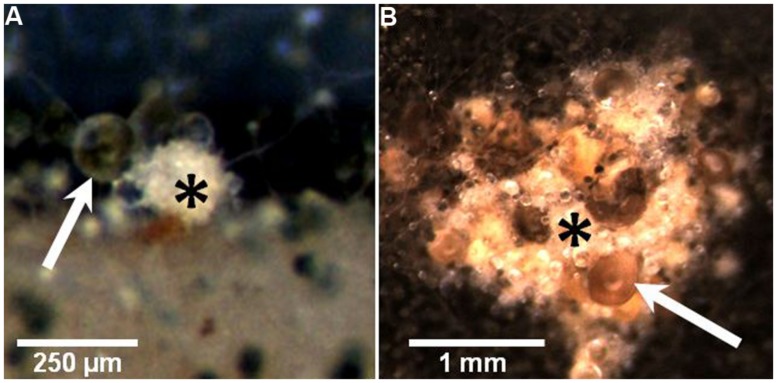FIGURE 1.
Images depicting the localized formation of guttation droplets on the sexual fruiting bodies (cleistothecia) of A. nidulans, which are possibly involved in mediating protection from grazing by Collembola (see Döll et al., 2013). (A) To the left of the initial stage (primodium) of a cleistothecium (asterisk) a strikingly large droplet (arrow) is formed in addition to some smaller ones. The whitish appearance of the primordium is due to layers of so-called Hülle cells which are assumed to nurse and protect the developing ascospores within the cleistothecium. It is not obvious whether the guttation droplets are produced by the Hülle cells or aerial hyphae surrounding the fruiting bodies. (B) A cluster of larger cleistothecia (asterisk), surrounded by a dark mat of conidia-producing tissue. The cluster is covered by voluminous droplets of light-brown color (arrow). Numerous smaller and apparently colorless droplets attached to single aerial hyphae are also visible.

